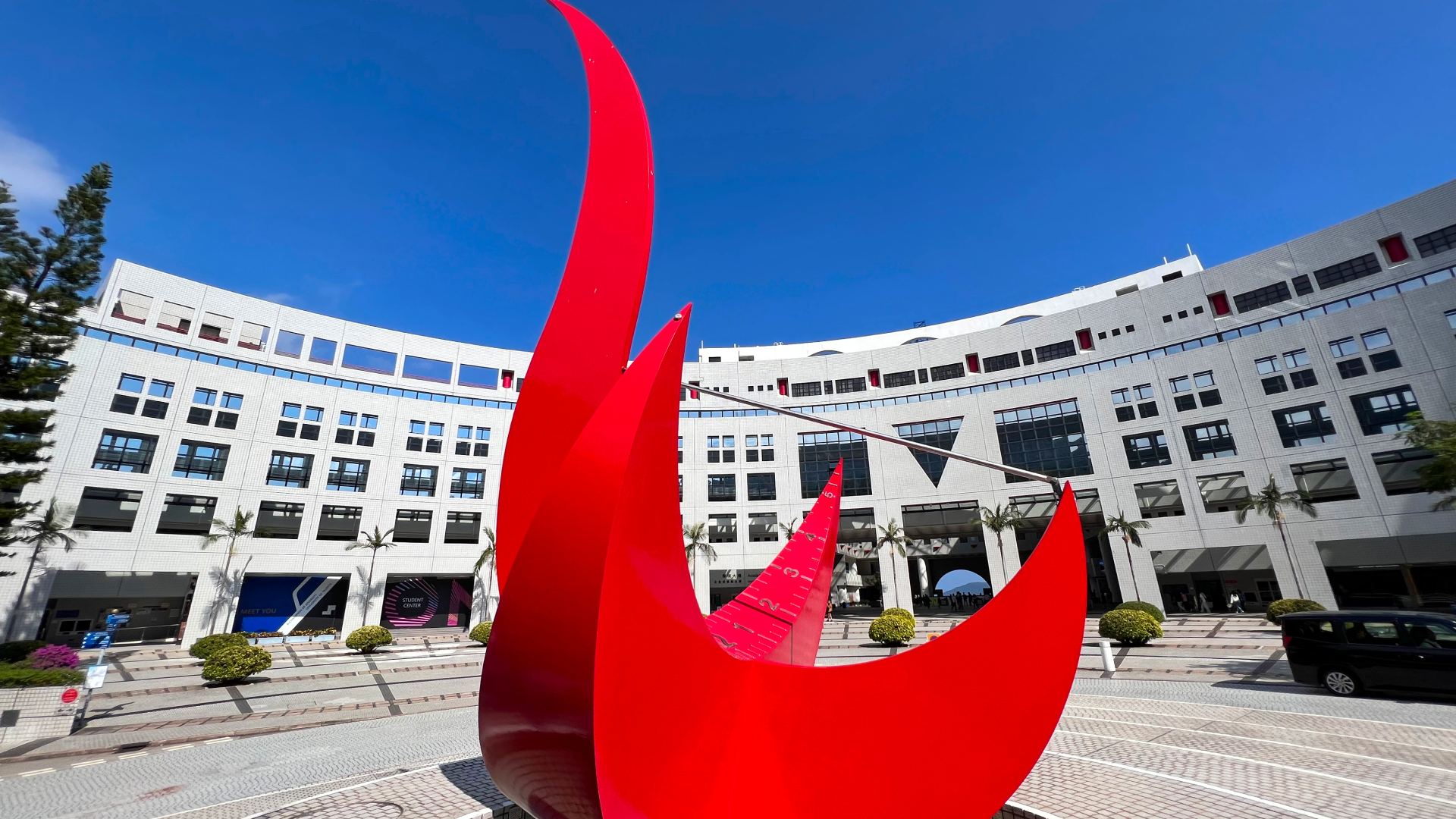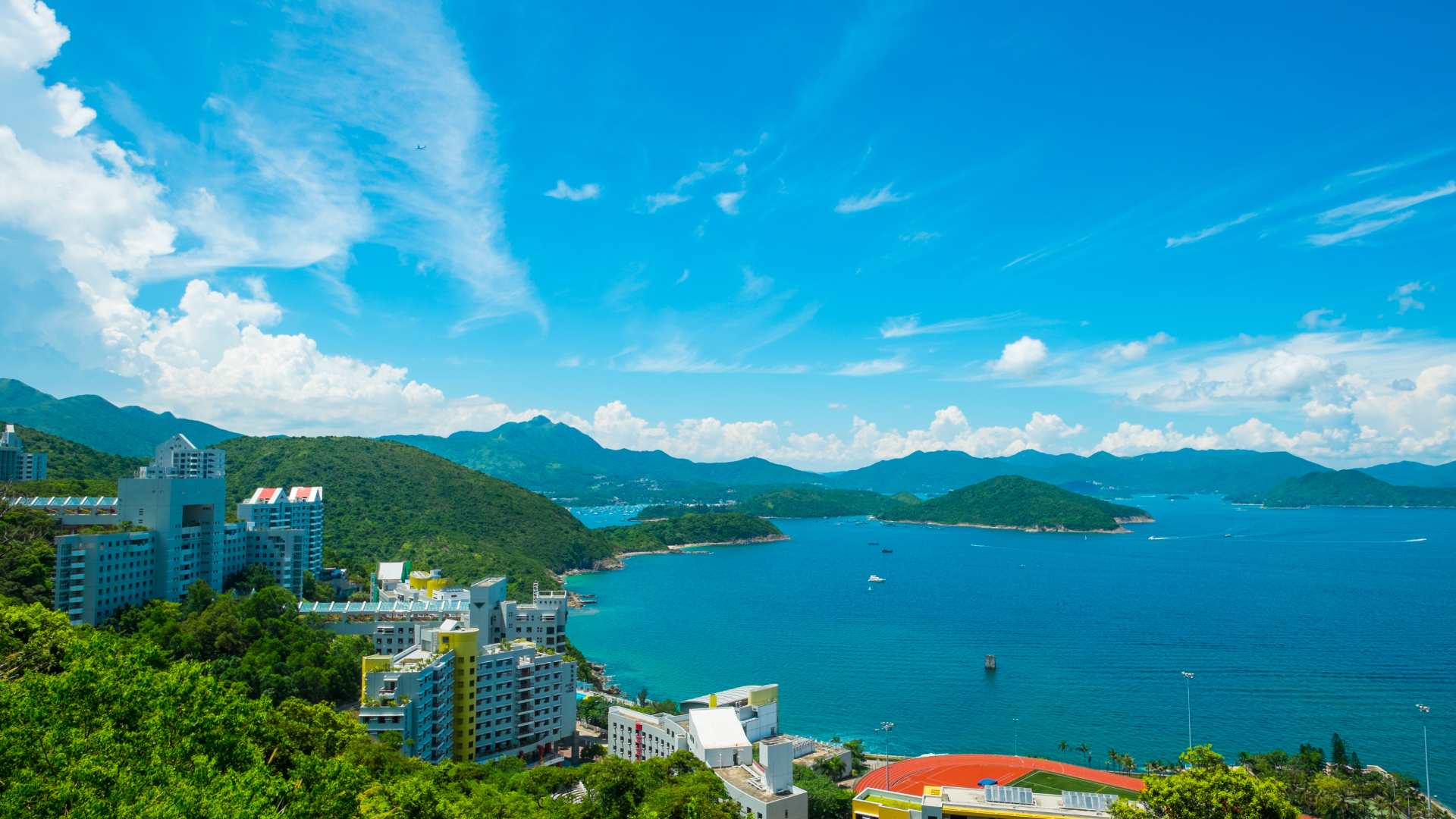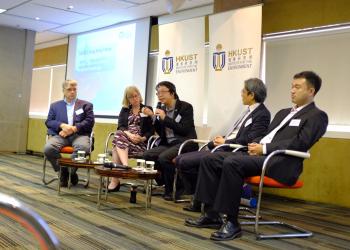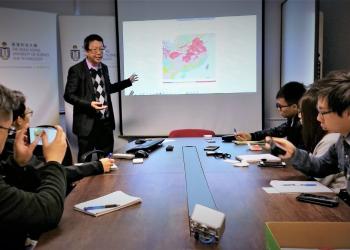新闻及香港科大故事
2021
2019
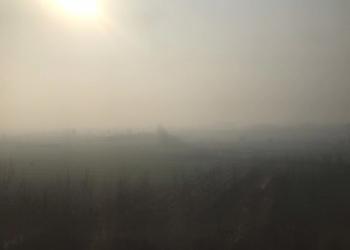
新闻
科大研究团队解开氮氧化物与大气中硫酸盐间关系之谜 为改善雾霾污染带来新希望
由香港科技大学(科大)领导的一支科研团队,近日首次揭示氮氧化物(NOx)如何影响大气中硫酸盐的多寡,以及其与雾霾形成的关系,为解决空气污染的政策制订者提供新见解。
由污浊浓雾所带来的低能见度、高湿度以及高浓度PM2.5悬浮粒子的现象,一直对包括中国内地在内的大城市造成困扰。而在各种直径小于2.5微米(PM2.5)的污染物中,由二氧化硫(SO2)在大气中氧化而产生的硫酸盐,是雾霾成因中最普遍的成分之一。
虽然科学界早已知晓二氧化硫与硫酸盐之间的反应物-产物关系,但形成过程中所涉及的氧化剂及氧化过程非常复杂多样化,特别是氮氧化物在这过程中扮演的角色,一直没有一个清晰的理解。有别于直接由汽车废气以及燃烧如煤、柴油和天然气等化石燃料而产生的氮氧化物,硫酸盐并非直接由污染源头排放,因而令希望控制它的研究人员及政府官员感到头痛。今次研究乃科学家首次系统阐述氮氧化物如何于不同情况下,透过氧化过程影响制造硫酸盐的一连串化学反应。
由科大化学系兼环境及可持续发展学部教授郁建珍领导的研究团队,与加州理工学院的研究人员合作,发现了氮氧化物在三种不同的化学环境中以不同机制影响硫酸盐的形成。在低浓度氮氧化物环境中,氮氧化物催化氧化剂的形成,促进硫酸盐的形成;在雾霾笼罩时所出现超高浓度氮氧化物的环境中,溶于雾滴中的氮氧化物直接作为氧化剂,也促进硫酸盐的形成。惟在中高浓度氮氧化物的环境中,由于二氧化氮(氮氧化物家族的一员)消耗了羟基自由基,令其不能有效地氧化二氧化硫,继而抑制硫酸盐的产生。
研究结果显示,要在高污染的雾霾条件下减少硫酸盐的形成,必须同时控制二氧化硫与氮氧化物的排放,但是,当氮氧化物排放达至中高量时,由于大气中的二氧化氮会抑制促进硫酸盐形成的羟基自由基,减排氮氧化物反而会导致空气硫酸盐增加。
2018
2017
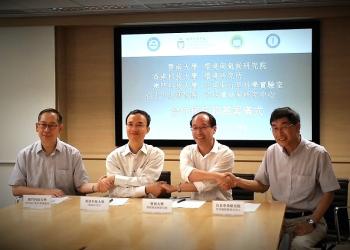
新闻
Institutions reach MoU to Prioritize Research Cooperation in Air Quality and Climate Change
The Institute for the Environment of HKUST reached a Memorandum of Understanding (MoU) with institutes of universities in Guangzhou, Macao, and Taiwan on 15 August 2017 to prioritize research cooperation in air quality and climate change.

新闻
Smog from northern mainland 'not affecting' Hong Kong
SCMP interviewed Prof. Jimmy FUNG, Head of Division of Environment, on 9 January 2017 for his comments on the air pollution peak problem in Hong Kong on last Sunday (8 January). Some people questioned if the toxic smog in northeast China could drift to Hong Kong with the arrival of monsoon winds. Prof. FUNG said that, based on the data from HKUST's Atmospheric and Environmental Database, there was no sign of connection between the very high PM2.5 concentration in northern China and that in Hong Kong. The data suggested that most of the pollutants were generated locally and regionally in Hong Kong and within the Pearl River Delta region.

